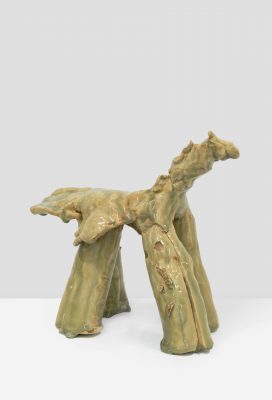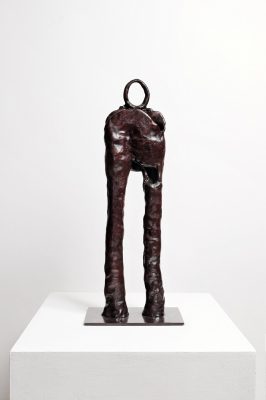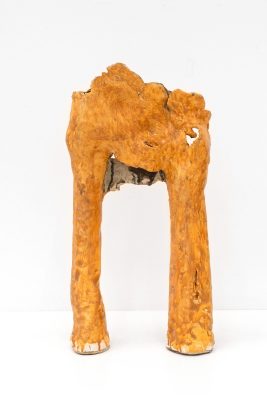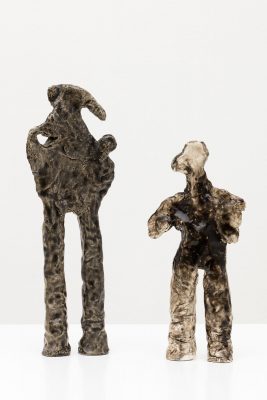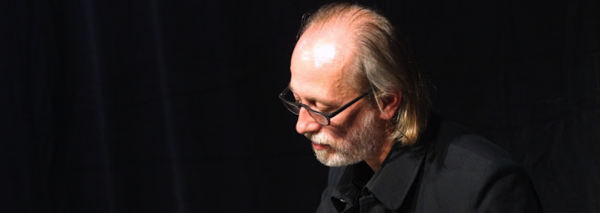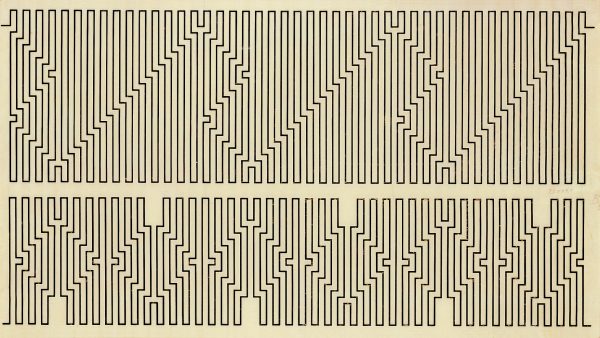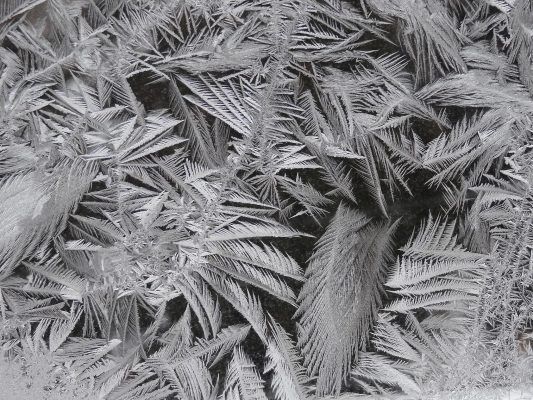For the last five decades, Simone Fattal has produced works that refract the particularities of the present vis-à-vis a careful consideration of the past. ‘History is a continuous movement,’ the artist has said in a recent interview; one that ‘is made every day,’ as she notes in another.[1] As aesthetic concerns in their own right, rather than mere source material, history and archaeology offer for Fattal modes of engaging form and politics with an indelible tenderness – a quality that defines the artist’s oeuvre.
Born in Damascus in 1942, Simone Fattal was educated in Beirut and Paris, where she studied philosophy at the Sorbonne. Upon returning to Beirut in 1969, she embarked on a career as a painter alongside contemporaries such as Etel Adnan, her collaborator and long-time partner with whom she still lives. With Adnan, Fattal fled Lebanon in 1980, during the nation’s civil war, settling in northern California and founding the Post-Apollo Press, a publishing house for experimental literature. Returning to visual art in 1988, Fattal began to make ceramic sculptures, and in the past decade has also made watercolours, paintings, and collage works.
WORKS AND DAYS (2019), the first solo exhibition dedicated to Fattal in the United States, gathers several hundred of these works across various mediums in a smartly arranged retrospective that sheds light on the artist’s expansive interests in such topics as Sufi mysticism, mythology, and the geopolitics of the Arab world. The artist draws from these themes to produce the ‘characters’ of her figurative ceramic sculptures, which include epic heroes such as Gilgamesh and Ulysses, alongside anonymous stock characters such as warriors, and standing or seated men and women. Neatly grouped together on white plinths, these sculptures are rarely more than a meter high, and are displayed alongside Fattal’s abstract landscapes hung on the gallery’s walls, producing effective visual links between her practices. As with her sculptural practice, Fattal’s approach to landscape is highly gestural, effacing the particulars of place while simultaneously indexing the artist’s hand. While the title of the painting LE MONT SANNINE (1979) references the mountain that Fattal could view from her apartment in Beirut, the subject is rendered ethereal, in hazy pinks and whites, with but a whisper of a line to suggest physical form. Against the array of glazed and unglazed humanoid figures on a nearby plinth, which are stripped of their visages and streaked with melanges of mauve, blue, and brown, LE MONT SANNINE is redolent of fleshy interiors, collapsing body and geography into a single plane.
Here, as elsewhere, Fattal gestures toward effacing the monumental to capture instead, impressionistic glimpses of an individual memory; but her interests are also firmly rooted in contemporary geopolitics, most clearly seen in a set of collages gathered in a single room. In one such collage, titled ALEXANDER THE GREAT (2011), a large Greek bust sits astride fractured clay animal figures, graphic Modernist brushwork, and what appears to be abstracted Nastaliq script. The largest collage on display, THEY FOUND WEAPONS OF MASS DESTRUCTION (2016) demonstrates how contemporary violence — specifically the 2003 U.S. invasion of Iraq — emerges anew from long-rooted injustices. Fattal juxtaposes images from across Western history, such as clippings from medieval European illuminated manuscripts and the moon landing and images of Sufi mystics. A photograph of the raid of the Algerian military leader Emir Abdelkader’s camp by the French army occupies the same plane as images of Pope John XIII sourced from an old issue of PARIS MATCH; strewn alongside are photographs of ceramics and fragments of French maps of what has now become known as the Middle East. Abutting colonial and imperial imagery alongside ancient relics, Fattal elucidates the myriad ways in which history has been instrumentalised as a tool of conquest. The search for the titular ‘weapons’, the existence of which would later be debunked, is but an extension of a long-held tradition of plunder justified under the guise of defense. History, to rephrase Fattal’s own statement, is re–made every day, often through bloodshed, war, and aggression.
And yet, the most poignant moments in this exquisite survey celebrate the intimacy of an individual life, in all its smallness. A suite of abstract black and white paintings, geometric forms on square canvases, flank the largest of Fattal’s sculptures, WARRIORS I-IV (2011—), which are made to nearly human scale. The paintings (which the artist has referred to as ‘drawings’ because of their geometric composition and quick execution) were each painted in the course of a day, and allude to varying perspectives of the same observed night sky. Marking a distinct change in register within the exhibition, the temporal shift of these paintings, and the scalar shift of the sculptures move from the grand echoes of historical time to the quiet lives led by so many individuals. It’s possible, in this room, to imagine it: figures in some primeval past, gazing upward into a dark abyss. Fattal knows that we have been there ourselves. And looking closely again to ALEXANDER THE GREAT, it’s possible to find a small photograph of the artist herself, a face in the grand crowd. She is here with us, too.
[1] Fattal in conversation with Hans Ulrich Obrist, Mousse, No. 53 (April 2016)
